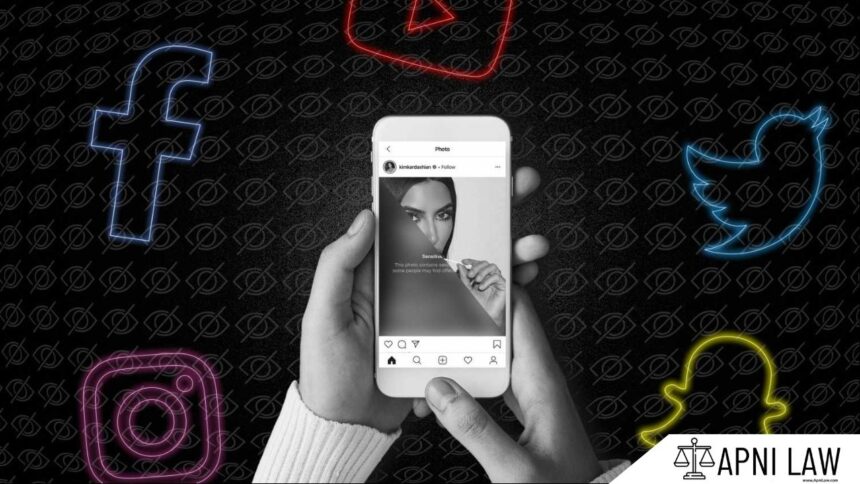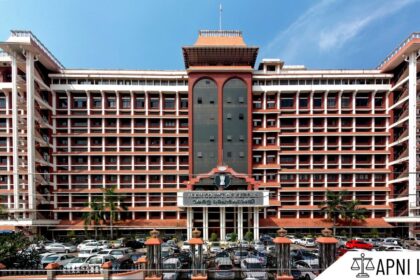What Does Section 67A of the IT Act State?
“Whoever publishes or transmits or causes to be published or transmitted in the electronic form any material which contains sexually explicit act or conduct shall be punished on first conviction with imprisonment of either description for a term which may extend to five years and with fine which may extend to ten lakh rupees and in the event of second or subsequent conviction with imprisonment of either description for a term which may extend to seven years and also with fine which may extend to ten lakh rupees.”
This section was introduced through the Information Technology (Amendment) Act, 2008 to specifically penalize the electronic publication or transmission of sexually explicit content or conduct. The law recognizes that digital media can be misused to circulate pornography and other explicit material. Hence, Section 67A aims to curb such actions and protect individuals from digital sexual exploitation.
Why Was Section 67A Enacted?
Before the 2008 amendment, the Information Technology Act only contained Section 67, which penalized the publication or transmission of obscene content. However, the scope of that section was too broad and failed to address material that displayed actual sexual acts or conduct.
The rise of internet pornography, revenge porn, and non-consensual video sharing demanded a stricter legal response. To fill this gap, Parliament enacted Section 67A. The section specifically targets explicit digital content that crosses the line from indecency into active sexual depiction.
How Severe Is the Punishment Under Section 67A?
The punishment under Section 67A is intentionally severe to discourage digital obscenity. For a first conviction, the accused can face imprisonment up to five years and a fine up to ₹10 lakh. If the person commits the offence again, the punishment can extend to seven years in prison and a fine up to ₹10 lakh.
The law treats this as a non-bailable and cognizable offence, which means police can arrest without a warrant, and bail is not a matter of right. The seriousness of the punishment reflects India’s zero-tolerance approach to the digital circulation of sexually explicit acts.
How Does Section 67A Differ from Section 67?
The distinction between Section 67 and Section 67A lies in the nature of the content. Section 67 deals with obscene material, anything indecent or vulgar that may corrupt or deprave viewers. Section 67A, however, specifically addresses sexually explicit acts or conduct that involve actual or simulated sexual activity.
For example, a vulgar meme or image might invite action under Section 67, but a video depicting sexual acts would clearly fall under Section 67A. The legislature intentionally imposed harsher penalties for 67A offences because such content has a more damaging impact on individuals and society.
What Have Courts Said About “Sexually Explicit” Content?
Courts have clarified that the material must be truly explicit to attract charges under Section 67A. In Times of India v. State of Maharashtra (2021), the Bombay High Court observed that not every obscene post qualifies as a sexually explicit act. The content must directly depict or describe sexual activity in a graphic or detailed manner.
This interpretation protects individuals from being unfairly prosecuted for sharing suggestive or vulgar content that does not meet the high threshold of explicitness. Judges must therefore examine the material carefully before applying Section 67A.
What Did the Supreme Court Say in Sharat Babu Digumarti v. NCT of Delhi?
In Sharat Babu Digumarti v. NCT of Delhi (2017) 2 SCC 18, the Supreme Court analyzed the scope of Section 67A in the context of digital platforms. The accused was an employee of a website where an explicit MMS video was uploaded and sold.
The Court held that liability under Section 67A applies only to persons directly involved in publishing or transmitting the explicit material. Intermediaries, such as website operators or internet service providers, cannot be held responsible unless they actively participate or fail to comply with due diligence requirements under Section 79 of the IT Act.
This judgment distinguished the role of content creators and transmitters from that of neutral intermediaries, balancing accountability with technological realities.
What Role Did Kamlesh Vaswani v. Union of India Play?
The landmark case Kamlesh Vaswani v. Union of India (2013) brought national attention to the issue of online pornography. The petitioner sought a complete ban on pornographic websites, arguing that they harmed public morality and encouraged sexual crimes.
The Supreme Court acknowledged the moral and social concerns but refused to ban adult pornography entirely, citing the right to personal liberty under Article 21 of the Constitution. However, it directed the government to block websites that hosted child pornography or sexually explicit acts as defined under Sections 67A and 67B of the IT Act.
This judgment reinforced the importance of Section 67A and led to stricter monitoring of internet content by the government and intermediaries.
Can Section 67A Offences Be Compounded?
Although Section 67A deals with serious offences, some courts have allowed compounding under exceptional circumstances. This means that the accused and the complainant may reach a lawful settlement with court approval. However, such compounding is rare and depends on the facts of each case.
As discussed in Vidhikarya Legal Advice (2022), compounding may be considered when there is no clear evidence of intent or when the content is borderline rather than clearly explicit. Nevertheless, this remains an exception and not the rule.
Does Section 67A Contain Any Exceptions?
Yes. The section contains a proviso that protects bona fide acts done in the interests of art, literature, science, or learning. This means that academic or artistic works that involve discussions of sexuality for educational or creative purposes do not fall under Section 67A.
For example, films certified by the Central Board of Film Certification (CBFC), academic studies on human sexuality, or medical materials used for awareness are generally exempt. Courts evaluate the intent and context behind the content to determine whether it qualifies as an offence.
What Is the Relationship Between Sections 67A, 67B, and 67C?
Section 67A focuses on sexually explicit material involving adults. Section 67B specifically criminalizes child pornography, depictions of minors in sexually explicit acts, and imposes even harsher penalties.
Section 67C obligates intermediaries to preserve and retain data to assist law enforcement in cybercrime investigations. Together, these sections form a strong legal framework against online sexual exploitation.
The combination of these provisions ensures that both individuals and digital platforms bear responsibility for controlling the spread of obscene and explicit content.
How Do Courts Balance Freedom of Expression with Section 67A?
Indian courts often balance Article 19(1)(a), which guarantees freedom of speech, with Article 19(2), which allows reasonable restrictions on grounds of decency and morality. Section 67A falls squarely within this limitation.
Courts interpret this law strictly to avoid misuse. For instance, in State v. Suhas Katti (2004), one of India’s first cyber pornography cases, the accused was convicted for posting obscene messages about a woman online. The case illustrated how the IT Act can protect victims of online sexual harassment while maintaining constitutional balance.
How Does Section 67A Impact Social Media and Online Platforms?
Social media platforms like X (formerly Twitter), Instagram, and Telegram frequently face challenges in moderating explicit content. Section 67A places a legal obligation on them to remove or restrict access to sexually explicit material once notified by authorities.
If a platform fails to comply, it can lose its “safe harbour” protection under Section 79 and be held criminally liable. At the same time, courts have clarified that mere liking or viewing of a post without intent to publish does not attract Section 67A. The Allahabad High Court reaffirmed this view in Vineet Kumar v. State of U.P. (2025), emphasizing intent as the decisive factor.
Why Is Section 67A Relevant in Today’s Digital Age?
In a world dominated by smartphones, social media, and instant sharing, digital obscenity has become a major concern. Section 67A serves as a deterrent against revenge porn, unauthorized video sharing, and the commercial distribution of explicit material.
The provision also empowers victims to seek justice when their private images or videos are shared without consent. By imposing strict penalties, it reinforces the message that the internet is not a space beyond legal control.
For any specific query call at +91 – 8569843472
Conclusion
Section 67A of the Information Technology Act, 2000, plays a crucial role in maintaining digital morality and protecting individuals from online sexual exploitation. It goes beyond general obscenity laws by addressing explicit sexual acts and ensuring strong punishment for offenders.








